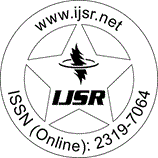Downloads: 130 | Views: 418
Review Papers | Environmental Engineering | India | Volume 6 Issue 4, April 2017 | Popularity: 6.7 / 10
Analytical Study of Heavy Metal in Pavana River and Its Effect on Aqua Culture
Ashwini B. Jamdade, Sagar M. Gawande
Abstract: A Heavy Metal monitoring of Pavana Rivers in pune. In Pune city there are three major rivers named Pavana, Mula and Mutha. For this assessment sampling points were selected from Chinchwad to Ravet and the samples were collected along the course of rivers. The analysis was carried out for the parameters namely pH, Temperature, COD, BOD, DO, TS, Turbidity and Heavy Metals. In many places the continuous discharge of industrial effluents and sewage are being discharged into the rivers, which probably exceeds the assimilative capacity of environment, leads to accumulation of pollutants on ground water and soils. The results obtained in this investigations revealed that the discharge of untreated industrial effluents and sewage have contributed considerable pollution in the rivers Pavana, hence the water of these rivers is unsafe for consumption or human use and needs preventive action and it also effects on the aqua culture and environment.
Keywords: Heavy Metals, toxicity, Physico chemical parameters
Edition: Volume 6 Issue 4, April 2017
Pages: 572 - 575
Please Disable the Pop-Up Blocker of Web Browser
Verification Code will appear in 2 Seconds ... Wait
